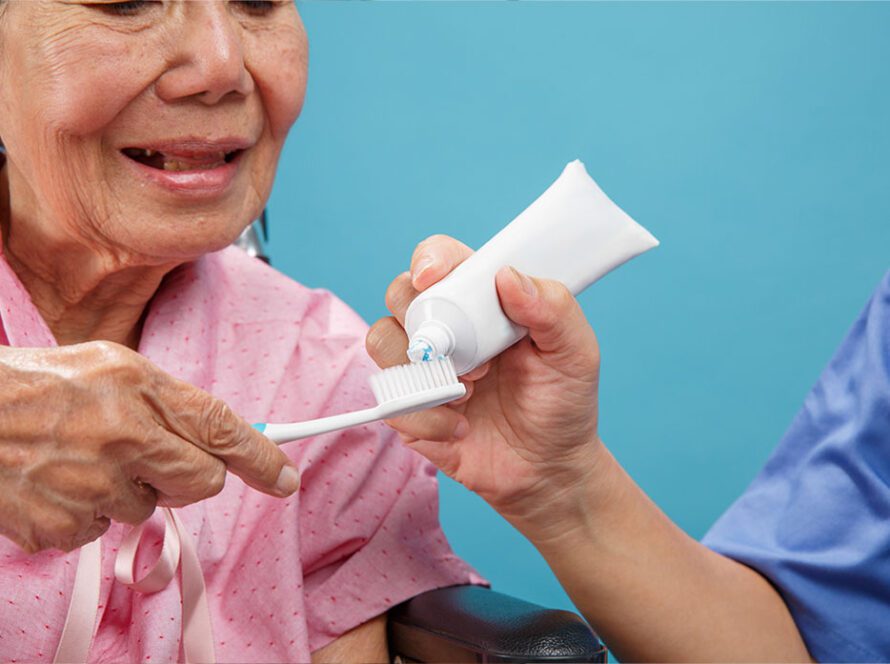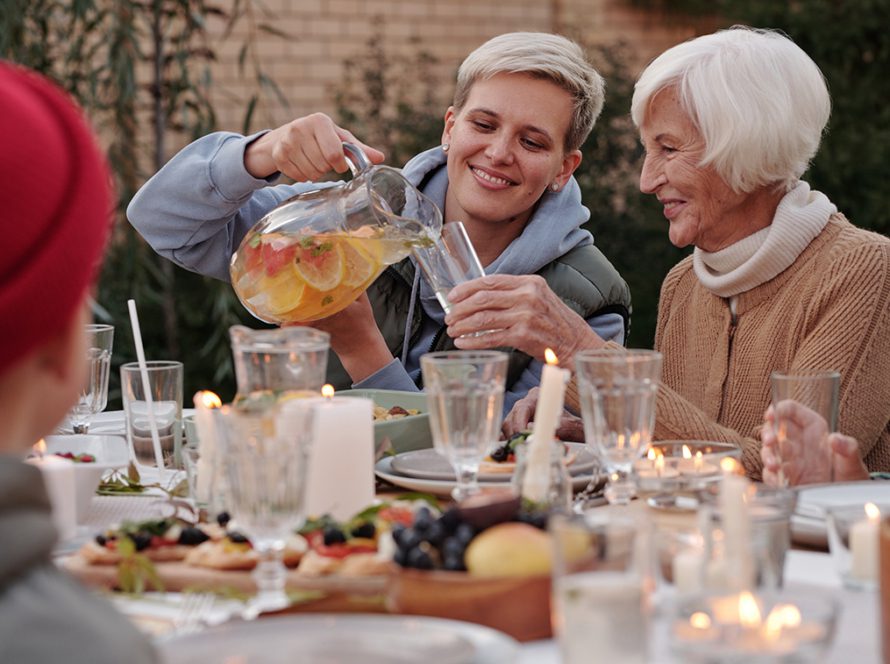Refusing to shower or bathe
Wearing the same clothing over and over
Challenging issues in the restroom
These are all common challenges for individuals with dementia. And for caregivers, they can be some of the most frustrating challenges. We cajole, beg and incentivize to no avail – the individual still refuses all attempts at grooming.
Why can personal care be such a challenge?
First of all, dementia does many things to the brain that have a profound effect on personal care and cleanliness. Someone living with dementia often doesn’t remember the need to bathe. The senses can be affected in such a way that they no longer recognize certain odors for what they are, and how or why to take care of them. They may not remember that they just wore the same outfit the day before, or that it has been nearly a week since they bathed. Dementia also affects sequencing abilities; meaning, the person with dementia may not remember the steps involved in grooming and personal care.
Secondly, personal care is just that – personal. Bathing and grooming can feel profoundly private, and assistance feels like intrusion. There may have been past trauma that someone has experienced that can make personal care feel very frightening. Someone living with dementia will likely struggle to communicate their distress through words and may simply react by striking out, crying, or verbal aggression.
Tips for Assisting with Personal Care
- Begin with the end goal in mind. It may take time for the person with dementia to feel comfortable with assistance, and every interaction we have with someone with dementia is an opportunity to build trust, or to create distrust. Understand that the end goal is not a perfect shower that takes place the way we think it should, in the time frame we think it should. Rather the goal is that the individual feels safe, loved, cared for, and that we achieve some measure of cleanliness. And this will take A LOT of patience.
- Know the individual. We all have routines and preferences when it comes to personal grooming, and someone with dementia is no different. Dementia does not take away personhood, or how vitally important it is that we honor their personhood, dignity and preferences. Discover everything you can about the person’s history and patterns. Did they prefer a bath or a shower? What time of day did they prefer to bathe? Do they have favorite scents or bath products? These details are important and will increase your chances of success if bathing is happening when and how they prefer, not us.
- Prepare the environment. Think about what you are asking of the person. Oftentimes seniors will be expected to strip down to nothing, in a cold room, with someone – because of the disease process – that they may perceive as a stranger. In that scenario, we are asking them to do something we would never, ever ask of ourselves. Think of these things when preparing the environment:
- Warm the room. Seniors tend to be prone to feeling cold, and for someone with dementia, the feeling of being cold can quickly trigger aggressive or anxious behavior. Turn the heat up and allow the room to warm before any clothing is removed.
- Make it pleasant. Think spa vs clinical bath. Have their favorite products, a soft robe, their preferred music, essential oils. Consider warming the robe or towels in the dryer.
- Set out all your supplies before you even approach the individual. Towels, clean brief and clothes, soap, washcloths – have everything you need at hand so that your focus can remain on the person
- Consider shower aids such as a shower chair and hand held shower head
- Time medication delivery. If the individual takes routine pain or anxiety medication, consider timing the shower or bath after those medications have been given and have taken affect.
- Invite in a dementia aware way. Consider the words you use; it may be more beneficial to guide the individual by saying “Its time to get cleaned up, let’s go get cleaned up” vs asking the individual “Do you want to go take a shower?” Due to the processing difficulties of someone with dementia, questions can be very confusing – and often generate an automatic “no” because the individual is unsure of what you are saying. Sometimes the announcement of bathing itself is unnecessary. Prepare the room, prepare your supplies, get the individual to walk with you; sing a song as you go and waltz yourselves into the bathroom and begin the task.
- Let the individual do as much for themselves as possible. The person with dementia should be encouraged to do as much for themselves as possible, for as long as possible. Try to avoid doing things to them or for them that they are still able to do for themselves. Not only will this help them maintain their abilities, but it will feel MUCH less intrusive.
- Start with the extremities before moving to more personal areas. We tend to be focused on getting the personal areas cleaned – genitals and under arms – since these are where most odors and bacteria collect. But these are the areas that will be most uncomfortable for the individual. Start with the feet and hands and work your way up.
- Keep the person covered and only uncover body parts as needed. Truly, there is no reason for the person to sit (or stand) naked and exposed. Use multiple towels and keep the person covered as much as possible. It is better to do extra loads of laundry than to experience a challenging behavior.
- Use a hand held shower head. While many of us prefer showers, and the refreshing feeling of water pouring over our head, many people with dementia do NOT. The more the disease progresses, the more distressing water on the face can be. Use the shower head from the neck down, and then on the back of the head – or wash hair in the sink and use the shower head for the body only.
- Use visual cues. Hand the individual a washcloth, get one for yourself, then visually demonstrate washing your face or under your arms. People with dementia tend to copy visual cues. Or place your hand under their hand and wash. They will feel their own hand – which is much less intrusive – but your hand is guiding.
- Consider a sponge bath if a shower or bath is simply too distressing. While the person is on the toilet, wash personal areas, arms and legs. Wash their face and neck during morning care and then their hair in the sink.
- Be patient and stop when needed. If the individual becomes distressed, stop what you are doing. Apologize and give them (and yourself) a break. You can always try again later.
While it takes a lot of time and patience, by observing the individual, knowing their history, and adapting the environment and routine accordingly, bathing can go from a difficult task to a meaningful experience. Remember, when you discover things that work with your loved one, share them with the entire team of care!


